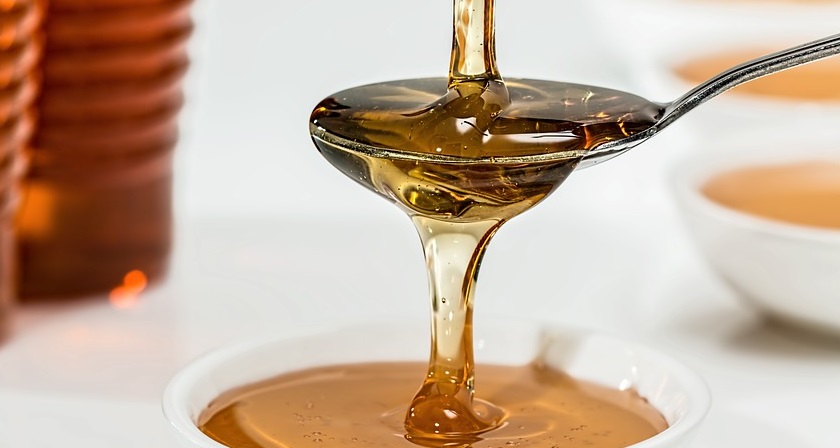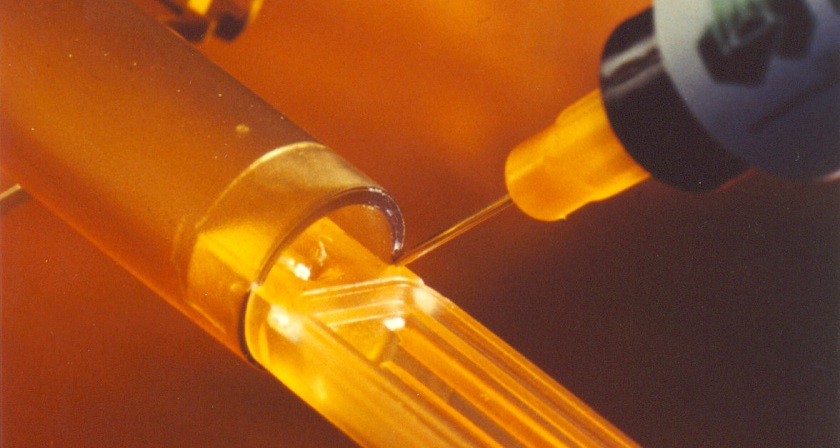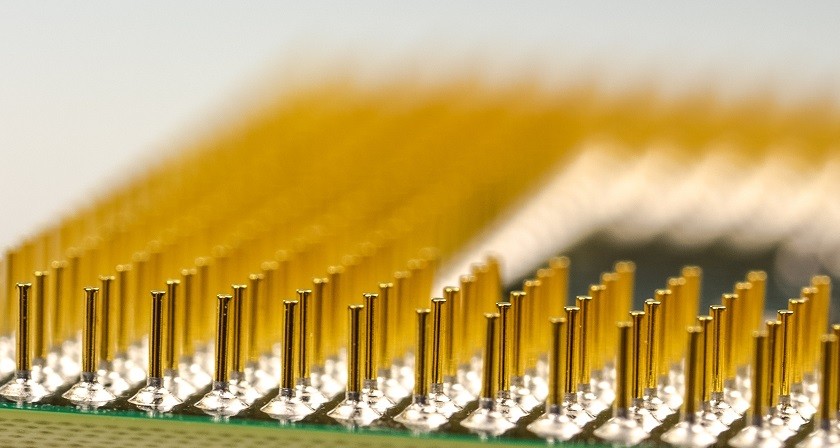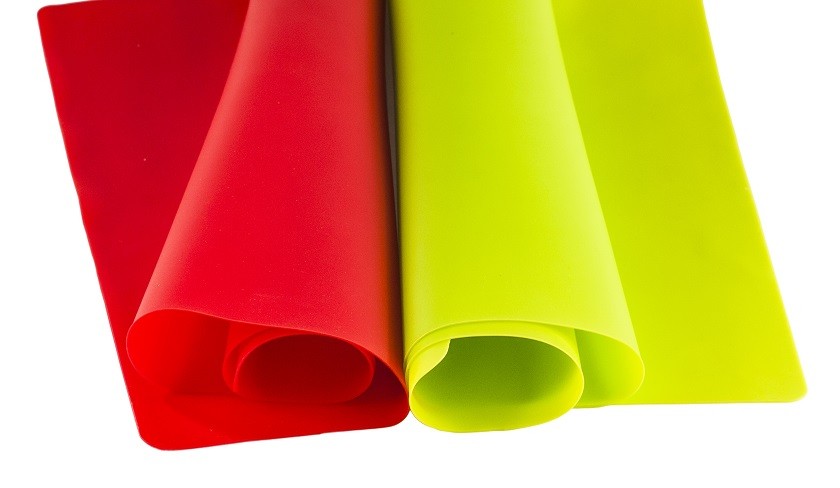Hypodermic needles can often have a high surface friction because of their manufacturing process. Needles are shaped as to minimize the force required to pierce and penetrate skin (or other substrate). However, the friction of the metal surface of the needle can make it more difficult. The result is that more force is required both during the puncture itself (penetration force), but also when the needle is dragged through the skin (drag force). This can lead to more damage to the skin than necessary and less comfortability for the patient.
To reduce the friction between the metal of the needle and skin, a thin layer of silicone can be used to coat the tip of the needle, adding a needle lubrication that reduces the friction considerably.
What type of silicone is used for siliconization?
Several types of silicone can be used for this purpose:
- A silicone fluid is a non-curing PDMS silicone which can have different viscosities (i.e. chain length of the silicone polymers) and therefore give different results.
- A silicone fluid can also be dispersed or emulsified in a solvent to make it more manageable. This is for example the case when using a very high molecular weight silicone. Normally, it would have a viscosity that is too high to work with.
- Curing silicones of can also be used. These types of silicones are often amino functional and the silicone polymers eventually crosslink to hopefully create a more durable coating which has a higher adhesion to the metal. It is also possible to use a silicone elastomer with a low coefficient of friction.
Adhesion
Besides lowering the friction during skin penetration as much as possible, it can also be of importance that the siliconization pertains its adhesion to the needle for several penetrations in a row. For instance, a suture needle will need to maintain in comfort during several, or many, stitches while other types of needles are meant for one-time use only. Even a regular needle used for blood samples or IVs may need several attempts to find the vein.
In a study performed by Nusil (Needle Coatings to Relieve Penetration and Drag forces of Needles, 2012), the forces of needles with various types of coatings were tested for several needle piercings in a row. The study showed that all types of siliconization gives an improvement compared to the uncoated needle. The products that maintained its lubricating effect best was a non-curing silicone dispersion with a very high molecular weight. It is believed that the reason for its success is due to entangling of the long polymer chains around the needle tip in combination with the intermolecular forces to the metal. These properties allow it to outdo even the curing silicones.
Medical approval for needle lubrication
Something to consider when choosing a silicone for needle coatings is that the silicone will come in contact with the patient and in fact be implanted into the person for a short while. Hence, it is important that the silicone is medically approved for this purpose. An ISO-10993 certification for short-term implantation is a suitable requirement.
Nusil products to consider:
Best results according to study: MED-4162
Curing: MED10-6670, MED-4159, MED10-4161
Non curing silicone fluid: Nusil MED-361
Dispensing techniques for needle lubrication
Most frequently, the silicone used for siliconization is diluted in some sort of solvent to achieve a suitable viscosity for dipping. When the solvent evaporates over time, it becomes important to continually track the viscosity and add more if needed. This since the viscosity will directly influence the thickness of the coating.
A newer and more sophisticated method for siliconization of needles is to use a small jetting valve based on piezo technology to apply the desired amount of silicone dispersion on the needle.
The needle is inserted into a coating chamber where a controlled amount of silicone is dosed. At the same time, a pulse of air transforms it into a mist. In this manner, the mist will coat the needle very thinly around the needle. Any excess silicone mist will be suctioned out of the chamber.
A big advantage with this system is that the silicone dispersion is fully encapsulated before it is transferred into the coating chamber. This means that there is no need to check the viscosity continually and add more.
Another interesting advantage with using this dispensing method is that the jetting system can handle more viscous materials as well. This reduces the amount of solvent needed in the process which has both environmental and financial benefits.
EFD Nordson has for example developed a dispensing system for this type of application:





